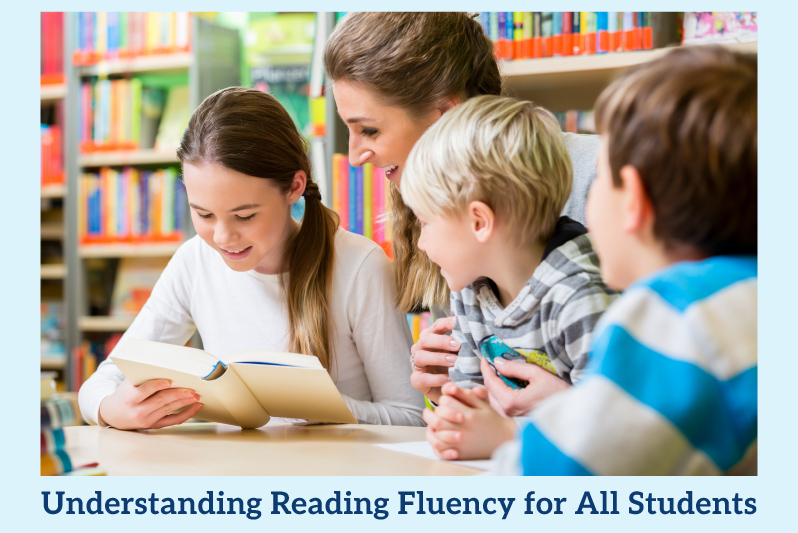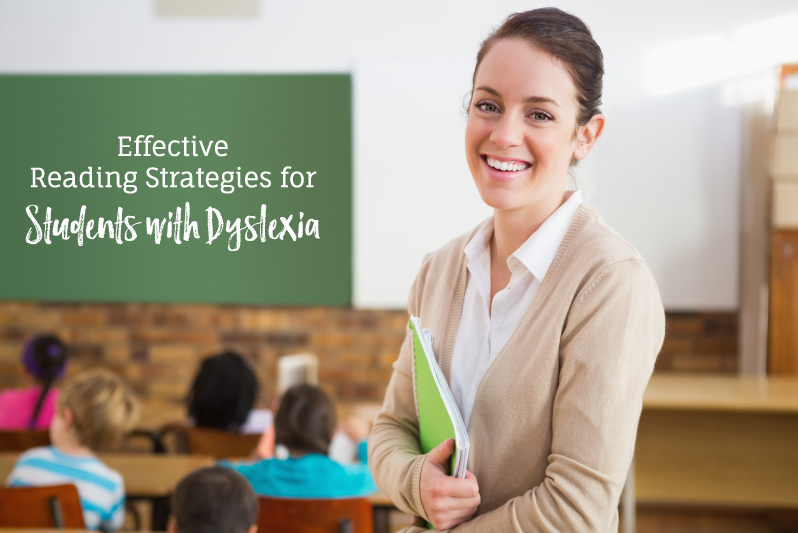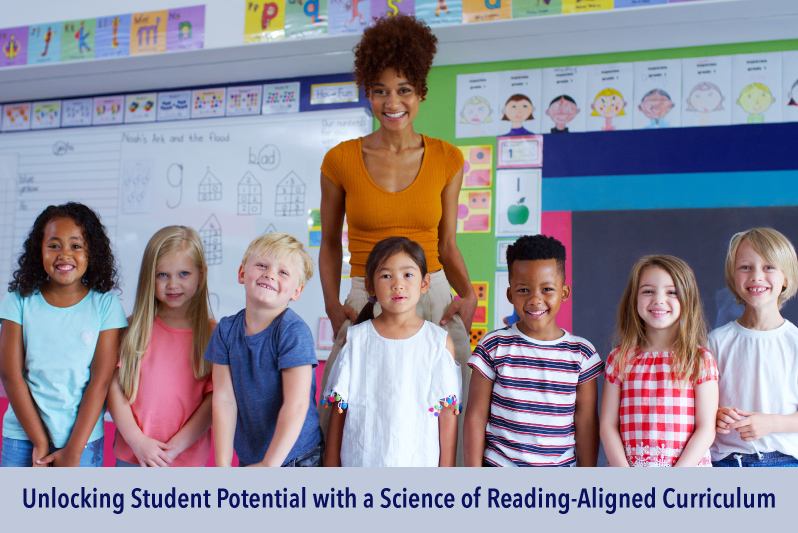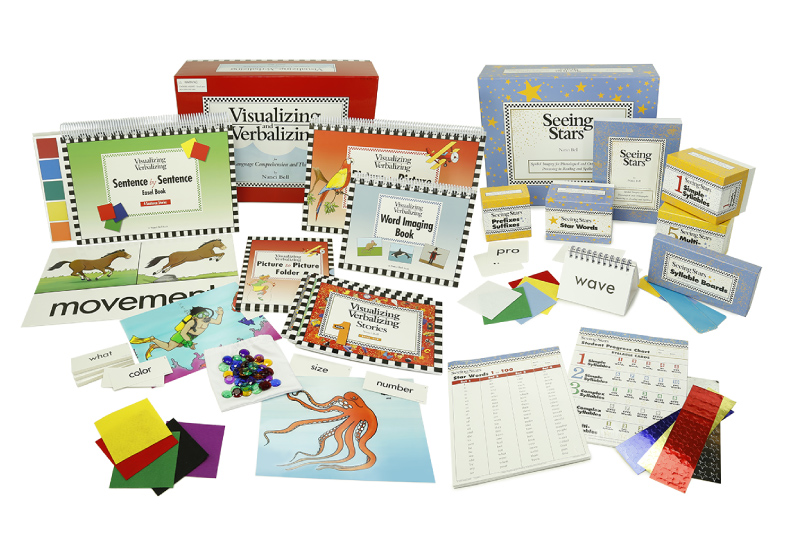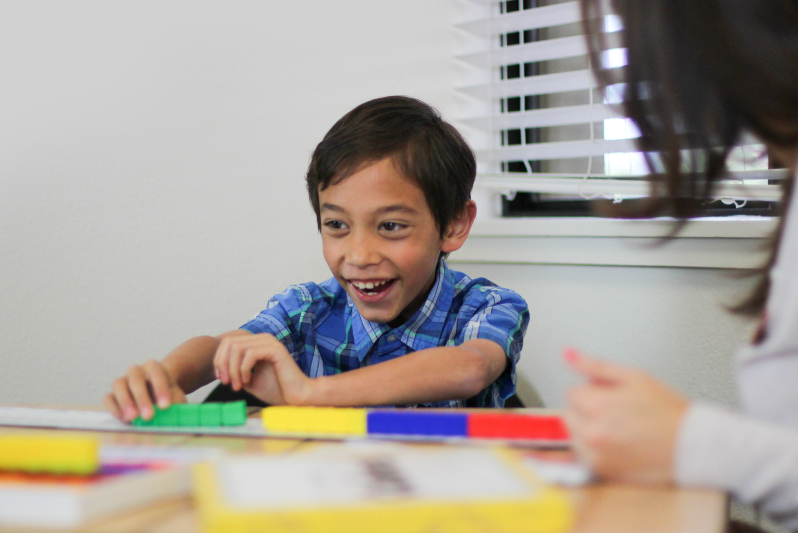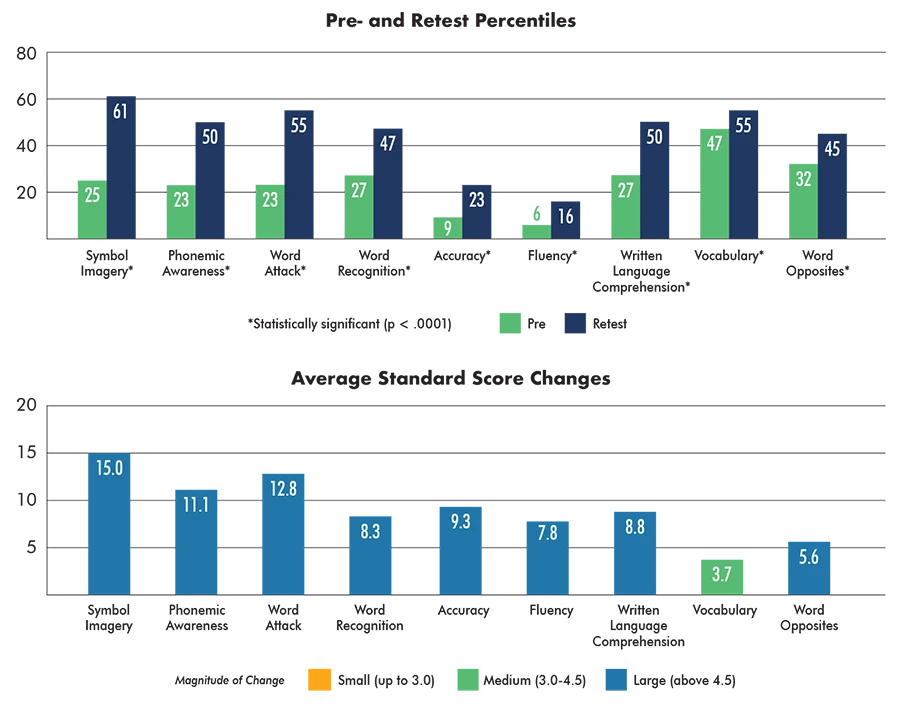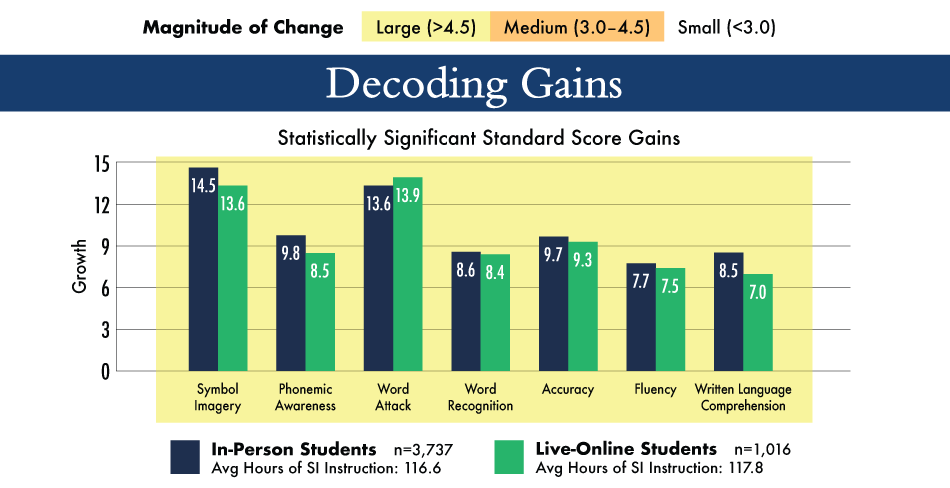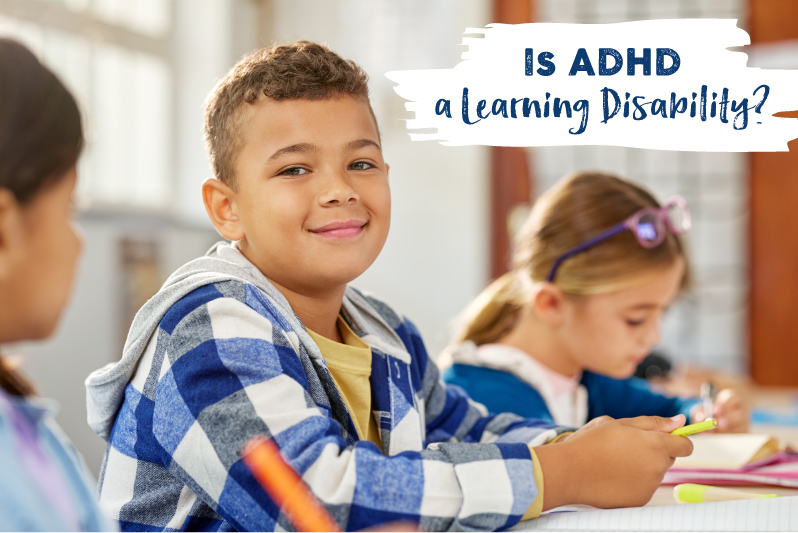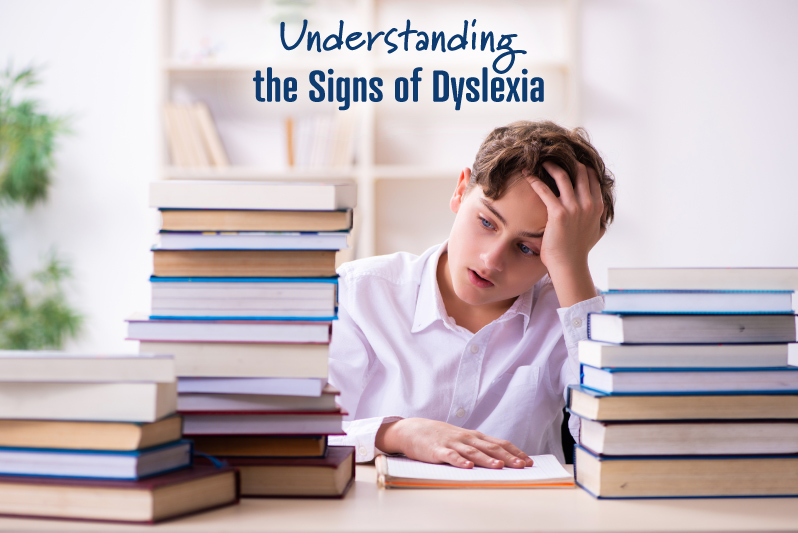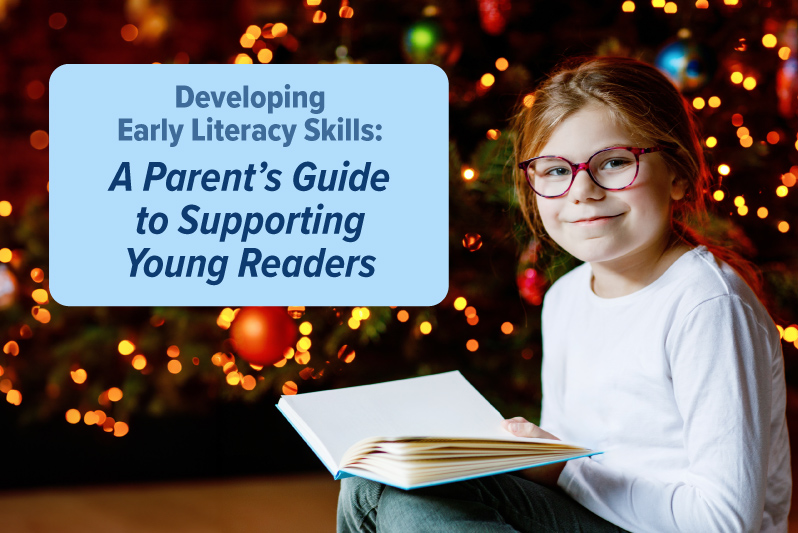
Developing early literacy skills lays the foundation for confident learning, curiosity, and long-term academic success. From listening and speaking to recognizing sounds, letters, and simple words, the early years are critical for building reading and comprehension skills. At Lindamood-Bell, we focus on the foundational sensory-cognitive skills needed for learning and provide families and educators with tools to help every child succeed.
Understanding Early Literacy Skills in Kindergarten and Early Childhood

Today’s kindergarten classrooms may include letter recognition, phonics, listening comprehension, and early math concepts. For many families, the transition to the classroom can raise questions like, “Is my child ready for school?” or “Will they be able to keep up?” These concerns are closely tied to the early literacy experiences children have before they enter formal instruction.
Early literacy development can begin with experiences that connect language, sound, and meaning. Reading simple books together, identifying letters in everyday settings, and talking about stories build comfort and curiosity. These experiences strengthen the sensory-cognitive processes that support reading and comprehension.
Key Components of Early Literacy Skills Development

Several interconnected skills enable children to make sense of spoken and written language. Learning to read is more than recognizing letters or memorizing words.
Phonemic awareness enables children to auditorily perceive and distinguish the sounds in words.
Orthographic processing, also known as symbol imagery, enables children to auditorily perceive and mentally picture the sounds and letters within words.
Concept imagery helps children create mental images from language for vocabulary and meaning.
Lindamood-Bell’s personalized, one-to-one instruction develops these skills in a structured, step-by-step way, providing a strong foundation for reading, understanding, and enjoying learning.
Early Literacy Milestones: What to Expect Ages 3–8

Children typically progress through predictable stages of literacy, though every child’s path is unique:
Ages 3–4: Early literacy skills and emergent reading, including enjoying being read to, recognizing some letters, and showing awareness of rhymes and initial sounds
Ages 5–6: Early literacy development and comprehension growth, including connecting sounds to letters, reading simple words, and stronger listening comprehension
Ages 7–8: Early literacy progression and fluency, including reading more fluently, spelling with increasing accuracy, and summarizing or inferring meaning from stories
While these milestones provide a helpful guide, some children find parts of this progression difficult. Challenges such as trouble recognizing letters, following along during reading, or understanding simple stories can appear at any stage. Early support can make a significant difference.
Early support can make a significant difference. Lindamood-Bell’s Learning Ability Evaluation can identify the sensory-cognitive processes that may be affecting a child’s early literacy development, providing a clear plan for targeted intervention.
The Role of Parents and Caregivers in Early Literacy

Parents and caregivers can play a vital role in developing early literacy by using everyday moments to strengthen language skills. During story time, for example, they can highlight key literacy components. While reading a book like Goldilocks and the Three Bears, a parent might pause to ask, “What do you see in this picture?” or “What do you picture will happen next?” Books also introduce new words and ideas, helping children link language to mental images, expand vocabulary, and support imagination and lasting literacy growth.
At home, parents can further encourage learning through simple, playful activities that naturally nurture early literacy:
Reading together: Daily read-alouds of 10–20 minutes with interactive questions, vocabulary highlights, and brief retellings
Sound play: Short activities that focus on rhyming, blending, and segmenting sounds
Print-rich experiences: Label commonly used items, create simple lists, and point out letters in the environment.
Writing and drawing: Opportunities to write names, label pictures, or create short stories
Play-based storytelling: Use toys, puppets, or household items to act out stories.
Decodable practice: Brief sessions with texts that match emerging reading skills
Conversation and background knowledge: Talk about daily experiences, describe observations, and introduce new words.
Parents can also support early literacy by practicing letter and number recognition and exploring resources like our free guide, The 3 Best Activities for Boosting Kindergarten Learning.
Tips for success: Keep activities short and upbeat, rotate materials to maintain interest, and celebrate effort and growth.
Kindergarten BOOST™: Early Literacy Enrichment

Kindergarten BOOST™ at a Lindamood-Bell Learning Center offers high-quality early learning designed to help children thrive. We provide year-round enrichment instruction focused on developing foundational imagery and language skills—phonemic awareness, symbol imagery, and concept imagery—that support reading, spelling, comprehension, and math. Our goal is to help every child feel confident, capable, and ready for school.
Through targeted early literacy instruction, Kindergarten BOOST™ helps children:
- Connect sounds to symbols for accurate decoding.
- Develop vocabulary and concept imagery for comprehension.
- Build confidence in reading, writing, and math.
What makes Kindergarten BOOST™ unique:
- Research-validated instruction designed to develop the skills that matter most
- Individualized approach and flexible scheduling
- One-to-one lessons with caring instructors who make learning fun
Instruction includes letter names and sounds, sounding out words for reading, sight word reading, printing letters and numbers, listening comprehension, communication skills, counting, addition and subtraction, pencil and scissors work, and color and shape recognition. Each child starts with an age-appropriate Learning Ability Evaluation to ensure the right level of support. Contact your nearest Lindamood-Bell location to learn more about our live online or in-person Kindergarten BOOST™ program for your student.
Supporting Early Literacy at Home and in School

Whether your child is just beginning to explore letters and sounds or is already in school, personalized support can make a real difference. Lindamood-Bell provides instruction designed to develop and strengthen the sensory-cognitive foundations for reading and comprehension.
Families can schedule a Learning Ability Evaluation for individualized guidance and begin instruction tailored to each child’s needs. Developing early literacy skills is a journey that begins with curiosity, connection, and communication. Learning support like our Kindergarten BOOST™ can help your child feel excited about school.
Our sensory-cognitive instruction targets the core processes of reading and comprehension to create measurable, lasting gains. With consistent support, children can progress from developing skills to fluent and meaningful engagement with text. Lindamood-Bell is proud to partner with families and educators to make the magic of learning happen from the very start.
Hear one family’s story of success: a mother celebrates as her son goes from not knowing his alphabet to catching up with his classmates in just a few weeks. Watch here:
Lindamood-Bell is a trusted leader in early literacy development. We are here to partner with you every step of the way, ensuring strong outcomes now and for the years ahead. Call us at 800-300-1818 or contact us today.






